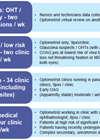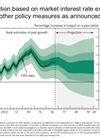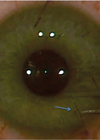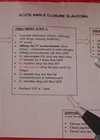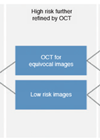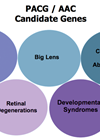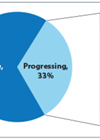Ophthalmology
Learnings and trends in the management of open-angle and angle-closure glaucoma
To be truly disruptive, newer technologies need to offer a quality of life benefit over medication to a broad population of glaucoma sufferers. Evidence and converging trends in medical and surgical management of glaucoma were explored in counterpoint discussions and...
Pituitary tumours: why are they so often missed?
Part 2: Clinical varieties, anatomical considerations and case report (see also Part 1 and Part 3) For ophthalmologists there are four types of pituitary tumour to be considered, three of which are named according to the hormone secreted, along with...
Brexit, for richer, for poorer: prospects for post-withdrawal Britain
The people of the United Kingdom voted by 52% to 48% to leave the European Union (EU) in June 2016, a referendum decision intended by a slim majority to restore national self-determination and achieve what many believed to be a...
#KnowYourDrops: breaking down barriers to poor compliance
Award-winning* #KnowYourDrops eye drop compliance campaign helps patients for World Glaucoma Week to achieve medicines optimisation in ophthalmology. The #KnowYourDrops campaign is fast becoming an internationally recognised model to help support healthcare professionals, with the provision of better tailored ophthalmic...
Refraction planning in cataract: avoid creating an unhappy patient
“It is much more important to know what sort of a patient has a disease than what sort of a disease a patient has.” William Osler The focus of this paper is the prevention of an unhappy patient following cataract...
Troubleshooting in LASIK
Contemporary laser in situ keratomileusis (LASIK) is safe and effective. It remains the dominant intervention in routine refractive surgery for a good reason: predictable results, rapid visual recovery, and relatively simple strategies for revision treatment. Over 95% of patients are...
Under pressure: a tool to aid the non-ophthalmic practitioner in the timely management of acute angle closure
Acute angle closure is a true ophthalmic emergency that mandates timely diagnosis and treatment. The priority in initial management is to lower the intraocular pressure in an expeditious matter using medical treatments. The risk of irreversible glaucomatous optic neuropathy is...
The International AMD Genomics Consortium study: another success in understanding the complex genetics of AMD
Age-related macular degeneration (AMD) is a neurodegenerative complex disease of the eye and a major cause of blindness and visual impairment among the elderly worldwide. The early stages of the disease are characterised by asymptomatic pigmentary abnormalities and accumulation of...
Pituitary tumours: why are they so often missed?
Part 1: Introduction, historical background and Edinburgh connections (see also Part 2 and Part 3) Is there any ophthalmologist who has not missed a pituitary tumour? Hopefully this article will help those currently in practice to avoid such an embarrassment,...
‘The Way Forward’ champions clinicians as architects of patient-centred service redesign
The demographic time bomb poses the dilemma of how more healthcare can be delivered to the UK’s ageing population without commensurate growth in resources. The Way Forward Project provides a robust resource for clinical centres to better identify and implement...
Breakthroughs in the genetics of angle-closure glaucoma
Angle closure glaucoma (ACG) is not widely known to be a familial condition, yet the recent explosion of genetic data and large scale genome wide investigations have confirmed at least 13 genetic loci associated with ACG [1], and provided some...
The structure function relationship in glaucoma
Chronic open angle glaucoma (COAG) is the second most common cause of blindness worldwide. It is diagnosed on the basis of three clinical signs, raised intraocular pressure (IOP), visual field (VF) defects and structural changes to the optic nerve head...


